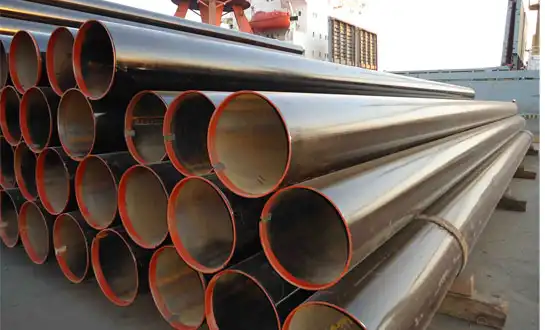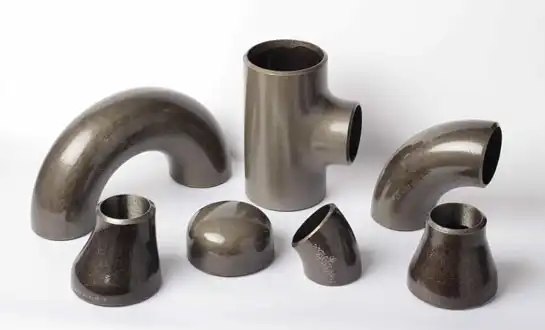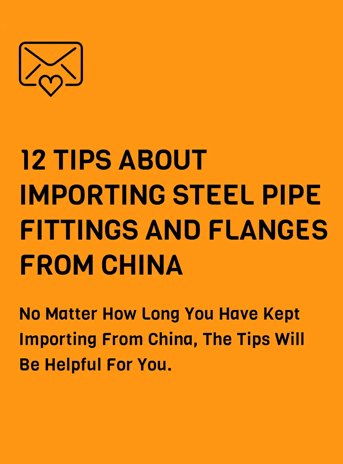How to Prevent Hydrogen-Induced Cracking (HIC) in Sour Service Pipelines?
Hydrogen-induced cracking represents one of the most critical failure mechanisms threatening the integrity of sour service pipelines, particularly in environments containing hydrogen sulfide (H2S). The prevention of HIC requires a comprehensive approach encompassing material selection, proper installation of butt weld fittings, and rigorous quality control measures throughout the pipeline system. Understanding the fundamental mechanisms behind hydrogen embrittlement and implementing proven mitigation strategies becomes essential for maintaining long-term pipeline reliability in challenging service conditions. This analysis explores the technical approaches, material specifications, and operational practices that effectively prevent HIC formation while ensuring optimal performance of welded connections and fitting assemblies in sour service applications.
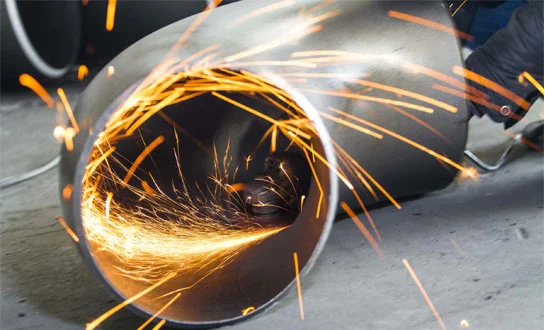
Material Selection and Metallurgical Considerations for HIC Prevention
Steel Chemistry and Microstructural Control
The prevention of hydrogen-induced cracking begins with careful selection of steel compositions that minimize susceptibility to hydrogen embrittlement, particularly important when integrating butt weld fittings into sour service pipeline systems. Low-carbon equivalent steels with controlled sulfur and phosphorus content significantly reduce the formation of non-metallic inclusions that serve as hydrogen trap sites and crack initiation points. Modern HIC-resistant steels typically maintain sulfur content below 0.002% and phosphorus below 0.015%, while incorporating calcium treatment to modify inclusion morphology and distribution. The microstructural characteristics achieved through controlled rolling and cooling processes create fine-grained structures that improve hydrogen diffusion and reduce crack propagation tendencies. These metallurgical improvements extend to the heat-affected zones around butt weld fittings, where proper base material selection ensures consistent HIC resistance throughout the welded joint. The steel chemistry must also consider the compatibility with welding consumables and procedures used for butt weld fittings installation, ensuring that the weld metal and heat-affected zone maintain equivalent or superior HIC resistance compared to the base material.
Heat Treatment and Manufacturing Processes
Specialized heat treatment processes play a crucial role in developing HIC-resistant properties in pipeline steels and the associated butt weld fittings used in sour service applications. Controlled rolling followed by accelerated cooling (TMCP) creates optimal microstructures that minimize hydrogen trap density while maintaining required mechanical properties. Post-weld heat treatment becomes particularly important for butt weld fittings installations, as it relieves residual stresses that can accelerate hydrogen diffusion and crack propagation. The tempering temperatures and holding times must be carefully selected to achieve stress relief without compromising the fine-grained microstructure that provides HIC resistance. Hydrogen baking treatments at temperatures between 580-650°C for 4-8 hours can effectively remove residual hydrogen from welded joints, particularly beneficial for critical butt weld fittings connections in high-H2S environments. The manufacturing process must also include proper handling and storage procedures to prevent hydrogen absorption during fabrication, transport, and installation phases, ensuring that the inherent HIC resistance of the material is preserved throughout the project lifecycle.
Quality Assurance and Testing Protocols
Comprehensive testing protocols verify the HIC resistance of both base materials and completed butt weld fittings assemblies before commissioning in sour service applications. The NACE TM0284 standard provides the primary testing methodology for evaluating HIC susceptibility, involving exposure to saturated H2S solution under controlled conditions while monitoring crack formation and propagation. Critical parameters including crack length ratio (CLR), crack thickness ratio (CTR), and crack sensitivity ratio (CSR) must meet stringent acceptance criteria to ensure adequate service performance. Testing of butt weld fittings requires particular attention to the weld metal, heat-affected zone, and parent material interfaces, as these regions often exhibit different hydrogen absorption and diffusion characteristics. Four-point bend testing under H2S exposure conditions provides additional validation of the resistance to sulfide stress cracking, particularly important for highly stressed areas around butt weld fittings connections. The testing program should also include hydrogen permeation measurements to quantify the hydrogen diffusion characteristics of the complete pipeline system, ensuring that hydrogen accumulation rates remain below critical thresholds throughout the design life.
Design and Installation Best Practices for Sour Service Applications
Stress Management and Geometric Considerations
Effective HIC prevention requires careful attention to stress distribution and geometric factors that influence hydrogen accumulation around butt weld fittings and other pipeline components. Design practices should minimize stress concentrations through proper component sizing, smooth transitions, and adequate wall thickness margins that account for potential material degradation over time. The installation of butt weld fittings must consider the local stress state and ensure that residual welding stresses do not exceed critical thresholds that could accelerate hydrogen-induced crack initiation. Finite element analysis can identify areas of elevated stress concentration around fittings and guide design modifications that distribute loads more effectively throughout the pipeline system. The geometric design should also facilitate effective cathodic protection current distribution and minimize areas where protective coatings might be compromised, as these factors directly influence hydrogen generation rates at the steel surface. Proper alignment during butt weld fittings installation prevents high local stresses that could create preferential sites for hydrogen accumulation and subsequent crack formation.
Welding Procedures and Quality Control
Specialized welding procedures for sour service applications require careful control of heat input, interpass temperatures, and post-weld treatment to minimize HIC susceptibility in butt weld fittings connections. Low-hydrogen welding processes using properly dried electrodes or inert gas shielding prevent additional hydrogen introduction during fabrication. Preheat and interpass temperature control maintains optimal cooling rates that promote fine-grained microstructures while preventing formation of susceptible phases like martensite. The welding sequence for butt weld fittings should minimize residual stress accumulation through balanced heat distribution and proper fit-up procedures that eliminate gaps and misalignment. Non-destructive testing protocols must include specialized techniques like hydrogen-sensitive ultrasonic testing and time-of-flight diffraction that can detect HIC-related defects in their early stages. Welding procedure qualification should demonstrate HIC resistance through testing of actual production joints under simulated service conditions, ensuring that the complete butt weld fittings assembly meets performance requirements rather than relying solely on base material properties.
Environmental Controls and Protective Systems
Environmental control measures significantly influence hydrogen generation rates and subsequent HIC risk in sour service pipelines containing butt weld fittings and other critical components. Effective cathodic protection systems must provide adequate current density while avoiding overprotection that could increase hydrogen generation through water reduction reactions. The protective coating system should maintain integrity throughout the design life, as coating failures create localized corrosion cells that concentrate hydrogen generation at vulnerable areas like butt weld fittings connections. Internal coating systems can provide additional protection by creating a barrier between the corrosive fluid and the steel surface, though proper selection and application techniques are critical to prevent coating disbondment that could create differential aeration cells. Chemical inhibition programs using filming amines or other hydrogen sulfide scavengers can reduce the corrosivity of the transported fluid and minimize hydrogen generation rates throughout the pipeline system. Regular monitoring of cathodic protection effectiveness and coating integrity around butt weld fittings locations ensures that protective systems continue to function effectively throughout the operational life of the pipeline.
Monitoring and Maintenance Strategies for Long-term HIC Prevention
Inspection Technologies and Damage Detection
Advanced inspection technologies enable early detection of HIC-related damage before it progresses to critical failure modes, particularly important for monitoring butt weld fittings and other high-stress pipeline components. Electromagnetic acoustic transducer (EMAT) technology can detect subsurface cracking associated with hydrogen-induced damage without requiring surface preparation or coupling agents. Phased array ultrasonic testing provides high-resolution imaging of crack networks that develop during HIC progression, allowing for detailed assessment of damage extent around butt weld fittings connections. Time-of-flight diffraction techniques offer superior sensitivity for detecting small crack-like defects that might be missed by conventional ultrasonic methods. Acoustic emission monitoring during hydrostatic testing can identify active crack growth associated with hydrogen-induced damage, providing real-time feedback on structural integrity. The inspection program should include specialized techniques for assessing the condition of butt weld fittings, as these components often experience different stress states and environmental conditions compared to straight pipe sections, requiring tailored inspection approaches to ensure comprehensive damage detection.
Preventive Maintenance and Mitigation Measures
Proactive maintenance strategies focus on eliminating conditions that promote hydrogen generation and accumulation around butt weld fittings and throughout the pipeline system. Regular inspection and maintenance of cathodic protection systems ensure optimal current distribution and prevent overprotection conditions that could increase hydrogen generation rates. Coating inspection and repair programs maintain the integrity of protective barriers that prevent corrosive attack and associated hydrogen formation. Internal cleaning operations remove deposits and scale that could create differential aeration conditions or shield areas from protective measures, particularly important around butt weld fittings where geometric changes might promote deposit accumulation. Chemical treatment programs should be optimized to minimize corrosion rates while avoiding chemicals that could increase hydrogen generation or interfere with HIC-resistant material properties. Temperature and pressure monitoring helps identify operating conditions that might accelerate hydrogen diffusion or create stress states that promote crack propagation around critical components like butt weld fittings connections.

Operational Optimization and Risk Management
Operational practices significantly influence HIC risk through their effects on system stresses, environmental conditions, and hydrogen generation rates around butt weld fittings and other pipeline components. Pressure cycling should be minimized to reduce fatigue effects that could accelerate crack propagation in hydrogen-charged materials, particularly important for maintaining the integrity of welded connections. Temperature control prevents conditions that could increase hydrogen diffusion rates or create thermal stresses that promote crack initiation around butt weld fittings installations. Flow rate optimization maintains adequate velocities to prevent stagnant conditions that could promote localized corrosion while avoiding excessive velocities that could cause erosion damage to protective coatings. Water removal systems eliminate free water that contributes to corrosion and hydrogen generation, particularly critical in areas where butt weld fittings create flow disturbances that might promote water accumulation. Regular sampling and analysis of transported fluids monitors for changes in corrosivity that might require adjustments to protective measures or operational parameters to maintain effective HIC prevention throughout the system lifecycle.
Conclusion
Preventing hydrogen-induced cracking in sour service pipelines requires an integrated approach combining proper material selection, specialized installation techniques, and comprehensive monitoring programs. The success of HIC prevention strategies depends heavily on the quality of butt weld fittings installations and the maintenance of protective systems throughout the pipeline's operational life. Effective implementation of these prevention measures ensures long-term structural integrity while minimizing the risk of catastrophic failures in challenging service environments.
HEBEI RAYOUNG PIPELINE: Leading Manufacturers of HIC-Resistant Butt Weld Fittings
At HEBEI RAYOUNG PIPELINE TECHNOLOGY CO., LTD., we specialize in manufacturing high-quality butt weld fittings specifically designed for sour service applications where HIC prevention is critical. As leading pipes and fittings manufacturers, we understand the importance of consistent quality, ISO 9001:2015 certification, and innovation in every application. Our diverse industrial pipe fittings, including specialized buttweld steel elbows, reducers, and flanges, undergo rigorous testing to ensure HIC resistance and long-term reliability in challenging environments. With GOST-R and SGS certifications validating our export compliance and quality standards, we deliver the dependable materials your critical pipeline projects demand. Our technical expertise in sour service applications, combined with our commitment to excellence, makes us your ideal partner for preventing hydrogen-induced cracking challenges. Ready to enhance your pipeline integrity with proven HIC-resistant solutions? Contact our specialized engineering team at info@hb-steel.com for expert consultation and tailored recommendations.
References
1. National Association of Corrosion Engineers. "NACE Standard TM0284: Evaluation of Pipeline and Pressure Vessel Steels for Resistance to Hydrogen-Induced Cracking." Houston: NACE International, 2016.
2. Carneiro, R.A., Ratnapuli, R.C., and Lins, V.F.C. "The Influence of Chemical Composition and Microstructure of API 5L X65 Steels on Hydrogen Induced Cracking." Materials Science and Engineering A, Volume 357, 2003.
3. Hejazi, D., Calka, A., Dunne, D., and Pereloma, E.V. "Effect of Manganese Content and Microstructure on the Susceptibility of X70 Pipeline Steel to Hydrogen Cracking." Corrosion Science, Volume 154, 2019.
4. American Petroleum Institute. "API Recommended Practice 5L2: Recommended Practice for Internal Coating of Line Pipe for Non-Corrosive Gas Transmission Service." 2nd Edition, Washington DC: API Publishing Services, 2013.
5. Zhang, G.A., Cheng, Y.F., and Lu, M.X. "Hydrogen-Induced Cracking Susceptibility and Hydrogen Trapping Efficiency of Different Microstructure X80 Pipeline Steel." Journal of Materials Science, Volume 44, 2009.
6. Kittel, J., Smanio, V., Fregonese, M., Garnier, L., and Lefebvre, X. "Hydrogen Induced Cracking (HIC) Testing of Low Alloy Steels in Sour Environment." International Journal of Hydrogen Energy, Volume 35, 2010.

Need a quote? Want to see samples? Just say hello. We’re friendly. We’re fast. And we’re ready when you are.
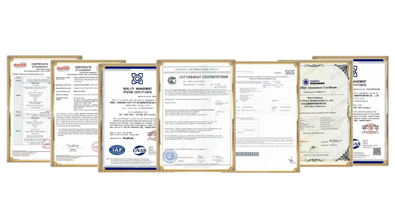
Welcome to RAYOUNG – Strong Pipes, Stronger Promise
